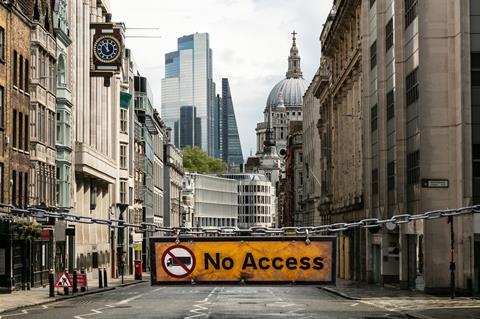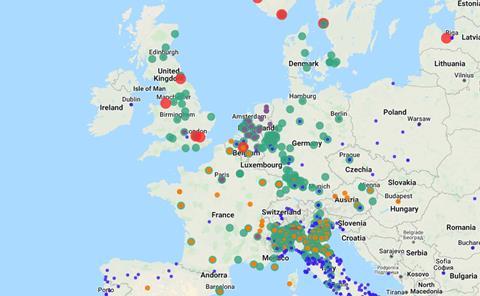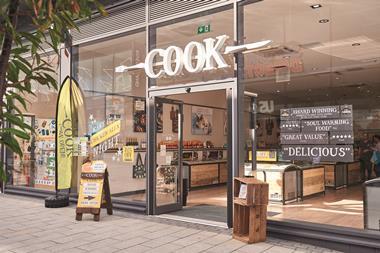Paris is ousting the vehicles in 2024. London, Oxford, and Bristol won’t be far behind. Diesel lorries cannot last much longer, but is the sector ready for the shift?
Paris’s 4th arrondissement, nestled on the banks of the River Seine, has a problem. As home to the Notre-Dame Cathedral and the Centre Pompidou, it’s best known for its famed monuments, modern galleries, and chic boutiques. But it is also relatively dense with food outlets. Among them, seven supermarkets, dozens of restaurants, and at least a few cafés.
From 1 January 2024, all of these businesses – along with every other store, wholesaler, and distributor across central Paris – will be banned from using diesel-powered lorries to bring goods into the city.
It follows the edict of Paris’s mayor Anne Hidalgo, who has revolutionised the city with a raft of green policies since her election in 2014. Other cities, including many in the UK, are not far behind.
Under an EU agreement signed in 2011, all European cities have pledged to have CO2-free urban logistics by 2030, pushing the likes of London to expand its Ultra-Low Emission Zone (ULEZ) – named “one of the world’s most radical urban policies” by the Centre for London think tank – and Oxford to launch the UK’s first zero emission zone last year.
The intention is to crack down on toxic air pollution and move further towards net zero, which will be a crucial part of tackling the accelerating climate crisis. Road freight accounted for a fifth of all London’s nitrous oxide pollution in 2016, according to the London Atmospheric Emissions Inventory – and it’s having a deadly effect on people, too. In 2019, between 3,600 and 4,000 Londoners died due to human-made emissions, with road transport the primary factor, found research commissioned by Transport for London (TfL) and the Greater London Authority.
The need is clear, but the practicalities are tricky. For food businesses in urban areas, it will require a fundamental overhaul of the transport networks they use to feed millions of urban dwellers each and every day. According to TfL, 89% of goods brought into London come on the back of a lorry, almost every single one of them powered by diesel. It is a similar case across the UK, Europe, and most of the world. How, therefore, will towns and cities feed themselves if most of their existing transport network is banned?

A moveable feast
In Paris, many major supermarkets have been diversifying their urban transport away from diesel trucks for some time. Since 2007, Monoprix has employed a 20-wagon shuttle to bring goods each day to a renovated rail terminal in central Paris, used as a base for a fleet of gas-powered trucks to make store deliveries.
Franprix, meanwhile, now supplies 135 of its 350 Parisian stores via river barge, depositing the goods at a small facility near the Eiffel Tower. It claims to be the only supermarket in the world to use river transport for the final leg of its supply chain, and one day hopes to supply all its Paris stores this way (if investment and public body support allows). While it is more expensive than bringing goods in by road, Franprix calculates it saves 300,000km of road transit each year – equivalent to 9,000 trips around the Paris ring road.
London too is awakening to the opportunities of non-road freight. While rail and river currently account for only 10% of the city’s freight journeys, in its 2019 ‘Freight and Servicing Action Plan’, TfL claimed the capital’s 32 rail freight terminals and numerous passenger piers were ripe for adaption, and could offer non-road freight significant scope for expansion.
“If you ban diesel and end up closing down small businesses, what is the balance of benefits here?”
Some of that work is already underway. The Port of London Authority is now working to reactivate at least five wharf facilities along the Thames and return them to operation by 2025, in a move it claims could take 140,000 annual HGV trips off London’s roads.
The reality is, though, that such schemes are a drop in the ocean when it comes to the scale of change needed. Even Paris is still 90% reliant on trucks for its urban transport. While major supermarkets may have the scale to ramp up alternative options, this will be considerably trickier for smaller businesses.
Increasing rail and river transport will therefore only ever form one part of the puzzle. The big change must come down to renovating lorry fleets with better, less-polluting vehicles. For most, this will mean electric.
Here again, much work is already underway. In the US, Amazon has made a deal with the Jeep-owned Stellantis to buy its electric vans when they arrive in 2023, while FedEx and Walmart have agreed to buy vans from BrightDrop, GM’s newly formed electric cargo van subsidiary. In the UK, Tesco is aiming to fully electrify its home delivery fleet by 2028, while Waitrose began trialling a new fleet of electric vans with wireless charging technology in December.
These smaller delivery vans form another crucial part of the puzzle. Such vehicles are used for home deliveries and short-distance trips, which made up 10% of all road transport emissions in London in 2010, according to TfL. This figure will continue to climb, with van traffic predicted to double by 2050, according to the Department for Transport (DfT).
How road freight dominates in all major world cities
The technology behind these electric vans is now well advanced. While their additional expense over diesel-driven counterparts could pose a problem to certain smaller companies, “they do solve that particular problem,” according to Chris Sturman, director of Craymere Consulting and a supply chain resilience advisor at Defra.
HGVs are where the conundrum really lies. In London, these lorries carry at least 90% of the goods travelling by road [TfL], bringing the bulk of food and drink into the city as well as distributing it to many larger stores and outlets. Yet their sheer size means the weight and size of batteries required to power them is often prohibitive in itself.
Furthermore, most electric HGVs on the market cannot travel more than 150 miles per charge. In refrigerated HGVs, the challenge is greater still, as trucks typically need two batteries: one to keep the engine going and one to keep the load refrigerated. This adds more weight and forces them to charge more often. Given the existing limitations of the charging infrastructure in the UK, it makes the transition from diesel to electric impossible for many companies at present.
That’s not to say some aren’t trying. Tesco launched two new e-HGVs in January to take food from a rail terminal near Cardiff to its distribution centre 30 miles away. While the vehicles can only travel 100 miles on a single charge, Tesco claims the two lorries will replace about 65,000 diesel-fuelled road miles a year.
Lorry manufacturers, too, are taking matters into their own hands. Volta Trucks is gearing up to launch its “world’s first” purpose-built electric HGV for urban freight distribution, with 5,000 vehicles to be made available next year ahead of Paris’s impending ban. By 2025, it plans to produce more than 27,000 trucks a year.
For now though, it is Volvo’s e-HGV leading the way with a market share of 42% in Europe, according to IHS Markit – a figure that equates to 1,100 orders last year around the world.

The latter figure serves to highlight the scale of the challenge. In the UK alone, there are almost 500,000 HGVs, according to DfT, most of which spend time inside towns and cities. Global orders of just over 1,000 are a drop in the ocean. As John Crosk of the London Freight Quality Partnership puts it: “The availability just isn’t there.” And even if electric HGVs were suddenly to arrive in great numbers, price remains an issue. Take Tesla’s electric ‘Semi’, for example. Due to launch in 2023, it costs £140k, and has a 500-mile range. An equivalent diesel truck costs about £80k.
So while the likes of Tesco or Walmart may find the money to invest in rejuvenating their fleet, smaller retailers, restaurants and hauliers operating on low margins and tight schedules will be unable to make the switch, points out Eleonora Morganti, an academic fellow in urban food systems at Leeds University.
When the Paris ban is enacted, Morganti believes many independent hauliers may go out of business – while others will leave Paris. This will disproportionately hit the smaller food outlets served by such operators, she adds, concentrating more power in the hands of the big retailers. “If you ban diesel trucks and end up closing down small businesses selling fruit & vegetables, what is the balance of benefits here? Less polluted air. But limited food access in many areas.”
One solution could be for smaller operators to consolidate their inbound loads onto a single lorry, by using a shared distribution centre on the fringe of the city. Bristol City Council opened such a facility in 2002, in an attempt to cut the number of diesel trucks entering the city. The site is now used by 81 retailers, a quarter of whom are food and drink operators. This has cut the number of loads into the city by up to 80% at peak times, the council says, meaning for every 10 vehicles making a delivery to the consolidation centre, only two or three (electric) lorry loads are needed to move the goods into central Bristol.
It is a moderate success, but like many such schemes, has struggled to attract mass participation. And larger cities like London face additional challenges. The capital’s size means the urban fringe is often too far from the centre to be served by electric vehicles, and yet the shortage of suitable space inside the city centre means new sites are a rarity. That’s not to say efficiencies can’t still be made. Guy’s and St Thomas’ NHS Trust, for example, has cut 90% of its 160 daily delivery trucks by opening a consolidation site in Dartford in 2019, at which suppliers can unload.
None of these projects are likely to be a silver bullet – rather, it will require a mixed bag of solutions driven by public and private sector working together. In the meantime, all eyes will be on Paris and its radical and pioneering challenge.





















No comments yet